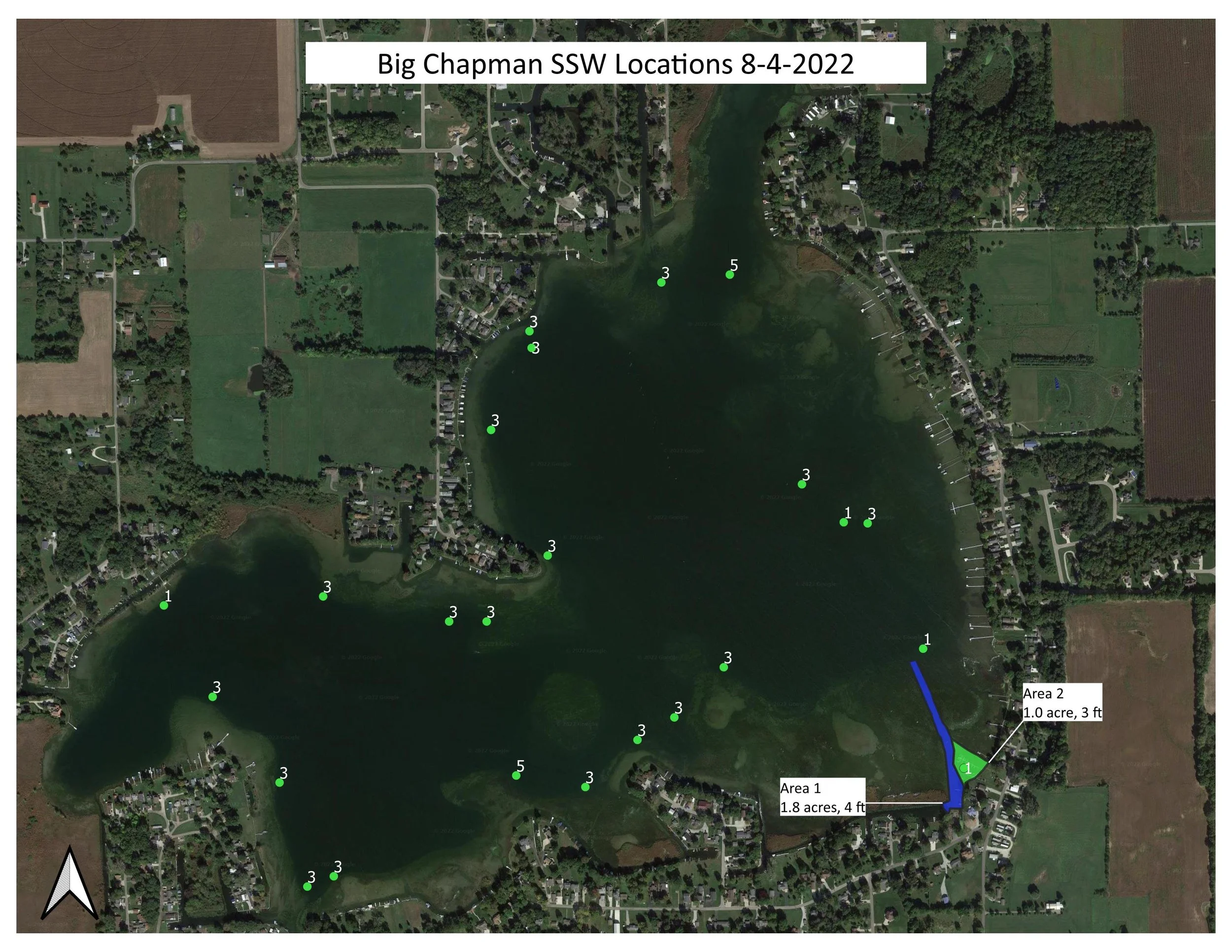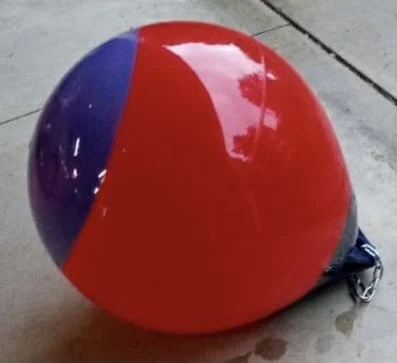Starry Stonewort locations as of August 2022 (Blue and Green) Areas
Starry Stonewort (SSW) was recently identified in Chapman Lake at the public boat ramp. Since it was first discovered it has spread to cover close to 3 acres at the boat ramp and has been transported to 2 acres on Little Chapman. SSW is a bushy, bright green macro-algae. The invasive algae can take over breeding areas for fish, overcome native vegetation, and disrupt our lake’s recreational activities. There are no known herbicides to kill SSW and it has not been eradicated anyplace in the United States. Until researchers can find a solution it is here to stay at our lake.
The CLCA works with Aquatic Weed Control for treatment and surveys pinpoint invaded areas and develops a plan of action. The treatment of SSW is costly and the CLCA relies on donations to combat treatment.
In an effort to bring awareness and caution, the Chapman Lakes Foundation has donated buoys to mark affected areas. If you see Red/Purple buoys as shown here, please stay clear of that location. In addition the CLCA will be installing educational signage on how to control Starry Stonewort on Chapman Lakes.
Be on the lookout for additional education and announcements regarding Starry Stonewort.
Starry Stonewort Locations as of August 2022 (Blue) Areas
starry stonewort caution buoy
Starry Stonewort Information
Appearance: Starry stonewort (Nitel-lopsis obtusa) is a new aquatic invasive species in Indiana. Starry stonewort is a bushy, bright green macro-algae. It produces a characteristic start-shaped bulbil.
Leaves and Stem: Thin, bright green branchlets (branch-link structures) and be variable in length and are arranged in whorls (radiating out from a single point) around the stem. Branchlets typically extend into acute angles away from the stem nodes. Tips of the branchlets may have irregularly-lengthed forks or divisions.
Threat to Indiana Waters: Invasive species cause recreational, economic and ecological damage, changing how residents and visitors use and enjoy Indiana waters.
Starry stonewort impacts:
Dense mats at the water’s surface inhibit water recreationists.
Overtakes habitat and out competes native aquatic plants, potentially lowering diversity.
Provides unsuitable shelter, food, and nesting habitat for native animals.
What you should do: People spread starry stonewort primarily through the movement of water-related equipment. Fragments can get tangled in trailers, motors, anchors, and inside watercrafts (boats, canoes, and kayaks). Small bulbils, which may be hidden in the mud and debris, can stick to trailer bunks, anchors, ropes, fabric, footwear, as well as scuba, fishing, and hunting gear. A small fragment or bulbil can start a new population.
Clean watercraft of all aquatic plants and prohibited invasive species.
Drain all water by removing drain plugs and keeping them out during transport.
Dispose of unwanted bait in the trash.
Dry docs, lifts, swim rafts and other equipment for at least 21 days before placing equipment into another water body.
Control Methods: Management of invasive aquatic plants involve either mechanical removal of plants or application of herbicides to public waters. Chapman Lakes Conservation Association is currently addressing non-native invasive weed control through L.A.R.E. (Lakes and Rivers Enhancement) grant.
For more information please visit:
https://nas.er.usgs.gov/queries/FactSheet.aspx?SpeciesID=1688







